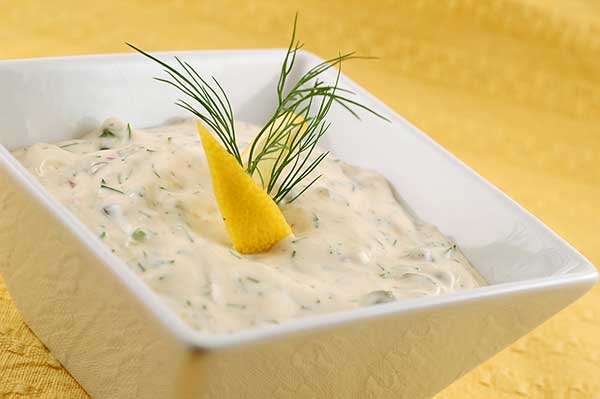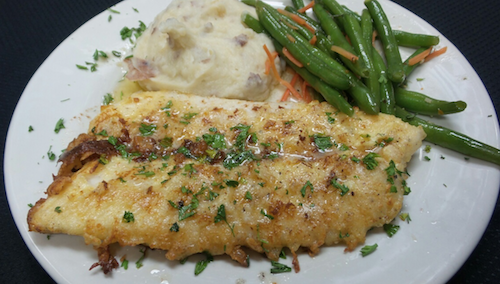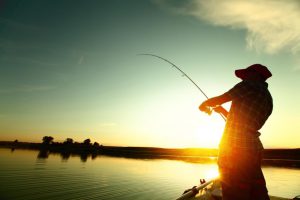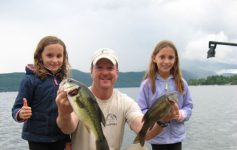Editors Note: Planet Joe is an occasional guest feature written by Joe Greco. He is a NYS licensed guide fishing part-time with Justy-Joe sportfishing charters (visit newyorkfishing.com ). He also works full-time as a production manager at Skidmore College and lives in Saratoga county with his two children Charlotte and Avery.
It was one of those days. They were biting “one after another” and before we knew it, we had a full catch. When the fish come easy a big fish feast is in order, and in many outdoor households this is a sacred meal. A truly joyous occasion and a reminder to us all how lucky we are to live in such a special part of the world.
Be it some plump walleye, a bonanza of pan fish or a stringer of rainbow trout, all fish deserve a proper treatment when it comes time to prepare them for the dinner table. As a full time Chef, I have many recipes I enjoy making and have fine-tuned over the years. Some of these have been shown to me by other outdoorsman, and some are just old recipes using basic techniques derived from French cuisine.
All fish are different from a structural aspect and they all have specific textures and flavors depending on how you cook them. After a few tips on preparing the fillets, I will share a few recipes with some species commonly fished for in our area.
The first step in proper fish cookery is proper handling of the fish when out in the field. During the warm summer months, I will not have my precious catch will not be bouncing around in my 70 degree live-well (basically a container with water and an aerator) all day! A cooler full of ice is the only way to go.
They are immediately chilled down, and in my opinion this is where many anglers go wrong. Typically many anglers will store the fish in the live-well, which often times will not keep them too “lively” at all, especially in 75 degree water. Get them out of the net and into the ice, you’ll be surprised what a difference it will make in flavor.

Cleaning
There are a few tools needed when cleaning your catch. Zip-lock storage bags, a good sharp fillet knife, needle nose pliers, a cutting board of course, and my all-time favorite tool – the electric knife. Yes, the knife I am referring to is the electric “turkey carving” knife found in any large department store.
The blades are very sharp and move so quickly that they carefully carve the flesh around bone structure without cutting through the backbone. Give one a try and you will be wondering how you survived without one for so many years.
I begin removing the entire fillet from the fish on both sides. After removing the fillet, you will then skin the fillet using a traditional fillet knife. Next, remove the rib cage and discard. Lastly, follow the “pin” bones with the tip of the knife cutting along one side of them, then back down the other side. Use a V pattern to avoid taking too much edible flesh along with the bones. This is a basic method to fillet most hard-boned fish, which are most members of the bass/pan fish and perch family.
The trout/salmon families are known as “soft-boned” and can be filleted using the same method – the only difference is in the pin bone removal. When cleaning trout and salmon, you will want to use the needle nose pliers to remove the pin bones as they will come out much less resistance than that of the hard boned species. This will result in more yield than using a knife, which unfortunately is a necessary evil when working with some species. Wash the fillets with cold water and keep cold until ready for use.
***************
Here are a couple of my favorite recipes. They are easy to make and on the “healthy side” I guess you could say. And NO, they don’t have bacon in them. When someone gives me a “must try” recipe I stop them at bacon because of course anything with bacon will be most likely edible!
However, I do have to share a really unique tartar sauce recipe using Greek yogurt.

Low-fat tangy lemon-caper tartar
Ingredients
1 cup Greek yogurt low fat
½ cup mayo
1 lemon juice and zest
2 Tbsp. minced chives
2 Tbsp. capers slightly chopped
2 Tbsp. your favorite pickle relish
Salt and pepper to taste
Directions:
Mix all ingredients to combine. You’ll be surprised how the yogurt lightens this popular sauce up – yet adding just a little bit of mayonnaise provides you the richness needed to make it satisfying.
****************

Walleye Francaise
Ingredients
2 walleye filets cut into medallions
1 cup flour seasoned with salt and pepper
2 eggs beaten
¼ cup parmesan cheese grated
2 Tbsp. chopped basil
2 Tbsp. chopped oregano
2 cloves minced garlic
2 lemons juiced and zest from 1
½ cup white wine
4 oz. diced butter
Directions
-Get a large sauté pan hot and add about ½ cup canola oil for frying.
-Dredge walleye fillets in the seasoned flour and set on a plate for egg washing.
-Beat eggs with the herbs and cheese and season with salt and pepper.
-When oil is very hot, dip fillets into the egg batter and sauté on both sides until golden brown (about 3 minutes each side).
-Remove them from the pan and place on a clean plate.
-Remove excess oil from pan and place back on the stove. Add garlic and lightly sauté for about 1 minute – do not brown.
-Add wine and reduce to about dry, add lemon juice and zest and bring to a simmer. Add the butter, whisking rapidly until emulsified into a nice sauce. Add fish quickly and just cook through.
-Serve immediately with steamed rice and your favorite vegetable.

Joe Greco
March 14, 2017



